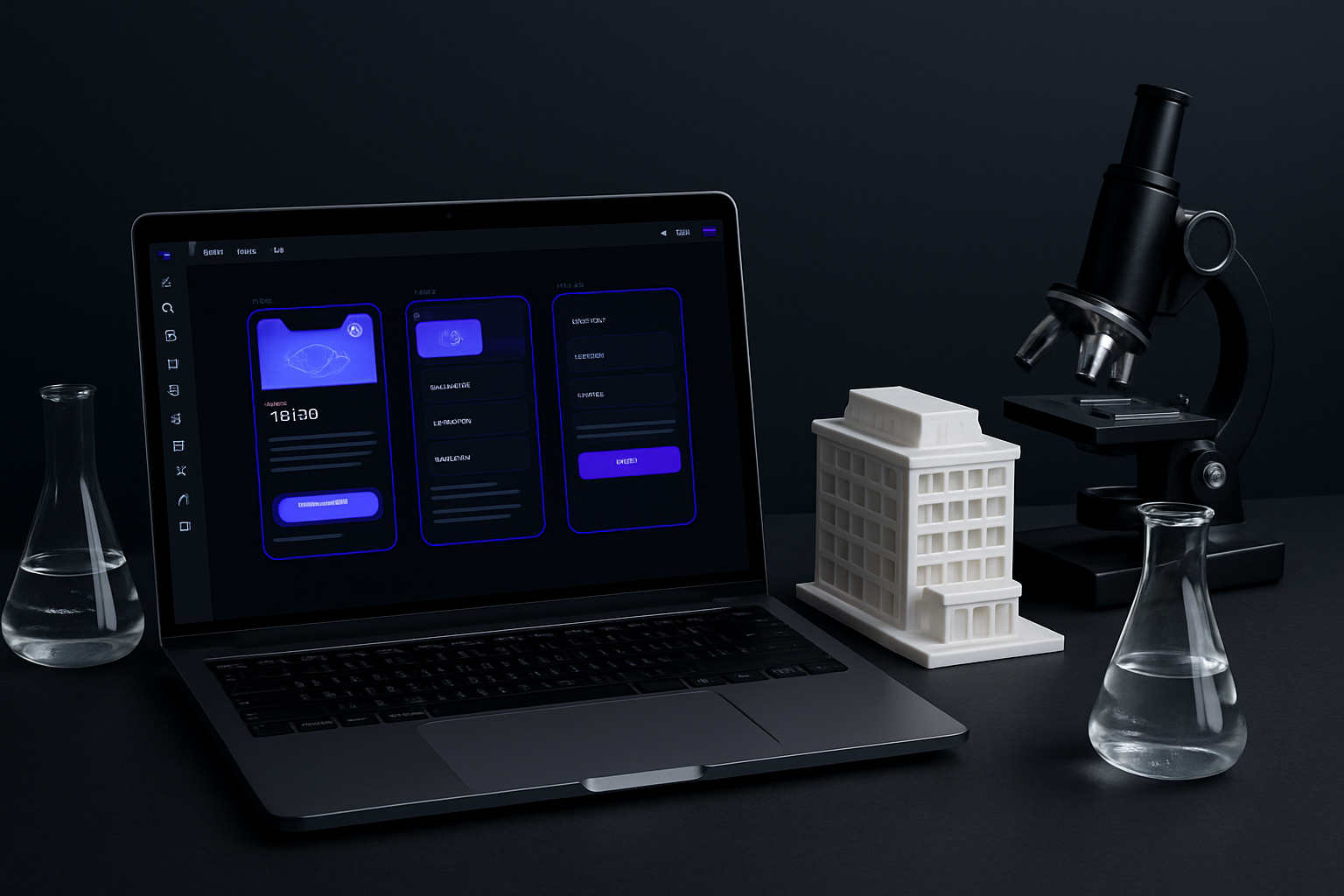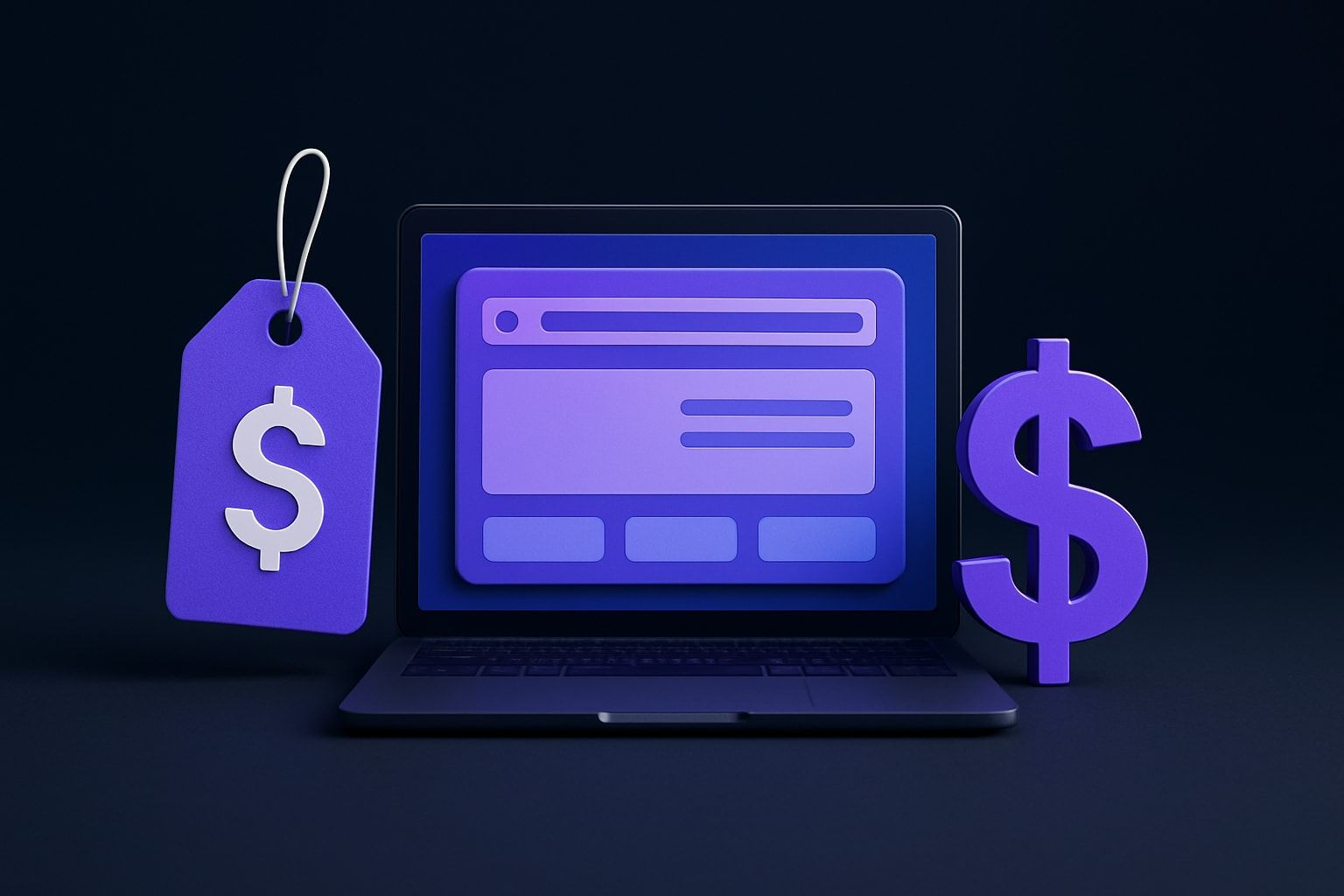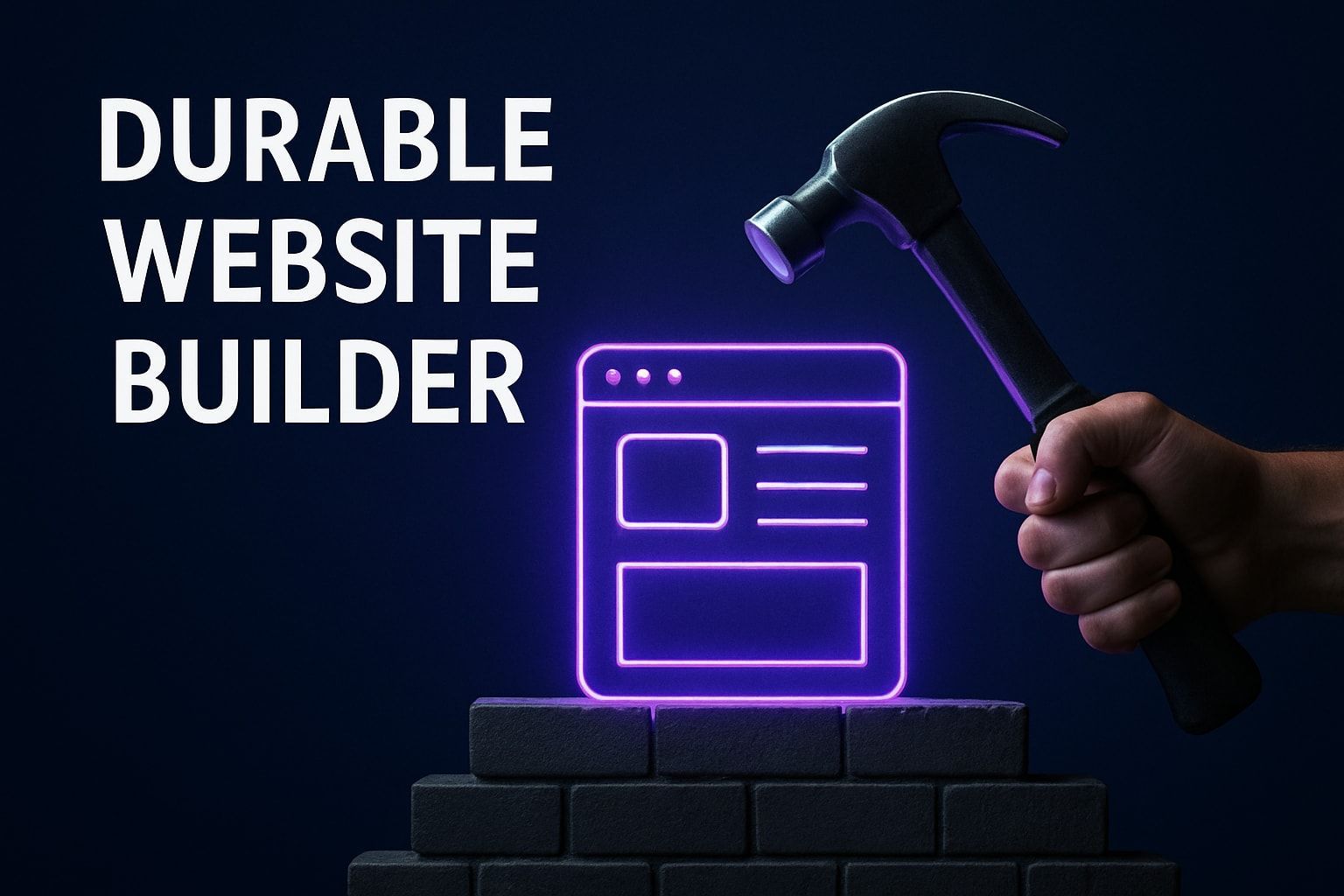How to Create Elements: A Complete Guide (2025)
Have you ever wondered how innovators create elements that change our world? From the periodic table to the digital screens we use daily, elements are the building blocks of tomorrow’s breakthroughs.
This guide is your roadmap to discover how to create elements across science, technology, and design. Whether you’re just starting out or refining your craft, you’ll find clear steps and expert tips.
We’ll break down core concepts, reveal the latest tools, walk through real-world examples, and explore future trends. Get ready to unlock the knowledge you need for 2025 and beyond.
Ready to master the art of element creation? Dive in and start building the future, one element at a time.
Understanding Elements: Definitions and Types
Unlocking how to create elements starts with understanding what an “element” truly means. Whether you’re a scientist, designer, or engineer, elements form the smallest building blocks in every field. Their significance spans far beyond chemistry, impacting everything from digital interfaces to skyscraper foundations.

What Are Elements?
In science, elements are pure substances consisting of only one type of atom, like oxygen or gold. These are fundamental units listed on the periodic table, each with unique properties. In technology and design, elements refer to the smallest reusable parts—think of a button in a web app or a basic block in software.
Key characteristics that define an element include indivisibility (in context), reusability, and clear function. For example, chemical elements can’t be broken down by ordinary means; UI elements are modular and serve specific roles. If you want to create elements in a classroom or lab, modern approaches even blend coding and chemistry, as seen in Elemental Coding in Chemistry Education, which brings digital design into classic scientific projects.
Types of Elements Across Disciplines
Different fields require you to create elements tailored to their needs. In chemistry, elements like hydrogen or iron are the foundational substances. In digital design, elements include buttons, headers, and sliders—core parts of any interface. For coding, HTML elements such as
<div>
or
<button>
structure web pages, while frameworks like React use components as digital elements.
Structural elements in architecture and engineering—like beams, columns, or panels—support buildings and bridges. Understanding the distinctions between these types is crucial when you create elements, as each serves a unique function and follows specific design rules.
Importance of Elements in Modern Innovation
To create elements effectively, you need to grasp their role in driving innovation. Scientific breakthroughs depend on discovering new elements, which can lead to advanced materials or energy solutions. In technology, well-designed digital elements shape user experience and product success.
Consider this: Over 100 million websites rely on well-constructed UI elements (W3Techs, 2024). The evolution of digital product design shows how refining and standardizing elements can boost usability and brand identity. When you create elements thoughtfully, you set the stage for scalable, impactful solutions across industries.
Common Misconceptions and Challenges
Many people mistakenly believe that to create elements is the same as making compounds or modules. Elements are the simplest units, while compounds are combinations. Another common challenge is overcomplicating the process—adding unnecessary features can hinder usability or scalability.
Scalability and standardization are frequent hurdles. For instance, a poorly designed UI element can break when reused in different contexts, leading to product failures. Learning from real-world examples of failed element implementation helps you avoid these pitfalls and create elements that truly work.
The Science and Fundamentals of Creating Elements
Unlocking the science and fundamentals behind how we create elements reveals a fascinating interplay between physics, technology, code, and engineering. Whether you want to create elements for chemistry, digital products, or structures, understanding the building blocks is essential for innovation. Let’s explore the core principles across disciplines.

Scientific Approach: Creating Chemical Elements
To create elements in a laboratory, scientists rely on nuclear fusion and fission. Fusion combines atomic nuclei to form new, heavier elements, while fission splits heavy atoms into lighter ones. Laboratories like those at CERN have synthesized superheavy elements such as Nihonium, Tennessine, and Oganesson using particle accelerators.
These discoveries not only expand the periodic table but also push scientific boundaries. Safety and ethics are critical, as handling radioactive materials can pose significant risks. Recent advances even include AI-driven models like MatterGen: Generative Model for Inorganic Materials Design, which help researchers create elements with improved stability and diversity.
Digital & Design Elements: Core Principles
When you create elements in digital design, atomic design methodology is the foundation. Popularized by Brad Frost, this approach treats everything from buttons to navbars as fundamental building blocks. Reusability and modularity are key—well-designed elements can be reused across products.
Accessibility matters, so following standards like WCAG 2.2 ensures everyone can interact with your creations. For example, to create elements like a reusable button, designers often prototype in Figma, checking for color contrast and keyboard navigation. This systematic approach guarantees consistency and inclusivity.
Coding Elements: Building Blocks in Software
To create elements in code, developers use HTML for structure and JavaScript frameworks like React or Vue for interactivity. HTML elements provide semantic meaning, while components in modern frameworks encapsulate logic and UI for scalability.
A best practice is to create elements that are modular and maintainable. For instance, here’s a simple custom HTML element:
<my-button>Click Me!</my-button>
<script>
customElements.define('my-button', class extends HTMLElement {});
</script>
This structure helps teams reuse and maintain code efficiently.
Material and Structural Elements: Engineering Foundations
Engineers create elements by carefully selecting materials for safety and durability. Load-bearing components—beams, columns, and slabs—are essential in construction. Recent innovations include 3D-printed building elements, which allow for rapid, precise assembly and reduced waste.
According to Global Construction Review (2024), 65% of new buildings now use prefabricated elements. This shift helps companies create elements that are both sustainable and scalable. The right foundation ensures projects meet safety standards and adapt to future needs.
Step-by-Step Guide: How to Create Elements
Ready to dive in and learn how to create elements across science, technology, and design? This step-by-step guide walks you through each phase, whether you’re building a new chemical element, a digital UI component, or a structural part for engineering. Let’s break down the process into eight manageable steps, so you can confidently create elements that are innovative, scalable, and impactful.

Step 1: Define the Purpose and Specifications
Before you create elements, start by clarifying your objective. Are you developing a scientific, digital, or structural element? Pin down the intended function, user needs, and any technical or regulatory constraints.
For instance, if you’re tasked to create elements for a website, consider accessibility, device compatibility, and brand guidelines. In a scientific context, define properties like reactivity or stability. Gather input from stakeholders to ensure all requirements are captured.
Checklist:
- What is the element’s main function?
- Who are the end users?
- What constraints or standards must be met?
By starting with a clear purpose, you lay the foundation to successfully create elements that truly solve problems.
Step 2: Select Tools, Platforms, and Materials
Choosing the right tools and materials is crucial to create elements efficiently. For digital elements, software like Figma, Adobe XD, or code editors empowers you to design and prototype. In labs, specialized equipment and chemicals are essential for synthesis. Construction projects demand quality raw materials and reliable machinery.
Let’s compare two popular UI design tools:
| Tool | Collaboration | Plugins | Platform Support |
|---|---|---|---|
| Figma | Excellent | Many | Web, Desktop |
| Sketch | Good | Many | Mac Only |
The digital revolution is transforming how we create elements, especially in materials science, with automated synthesis and AI-powered platforms. For deeper insights, explore the Digital Transformation in Materials Science.
Always match your toolset to your project’s complexity, budget, and team expertise.
Step 3: Design and Prototype the Element
With your tools in hand, it’s time to design and prototype. For digital projects, sketch wireframes or use design software to visualize how you’ll create elements in your product. Scientists may run simulations or small-scale experiments, while engineers often rely on CAD modeling.
Example (Digital):
Prototyping a navigation bar in Figma lets you experiment with layout, color, and accessibility features before coding.
Tips:
- Iterate quickly with low-fidelity sketches.
- Gather early feedback from users or peers.
- Document key design decisions.
Prototyping helps you identify flaws early, streamlining the process to create elements that work as intended.
Step 4: Build and Assemble the Element
Now, bring your design to life. In digital projects, write code to create elements—like building a custom button in React:
function CustomButton({ label, onClick }) {
return <button onClick={onClick}>{label}</button>;
}
For scientific elements, assemble materials in controlled lab conditions, following safety protocols. In construction, combine prefabricated or raw parts using specialized tools.
Key Reminders:
- Follow best practices for code or assembly.
- Check compatibility with existing systems.
- Keep scalability in mind as you create elements.
Building is where your vision starts to take tangible form.
Step 5: Test, Validate, and Refine
Testing is essential to ensure the elements you create meet quality standards. In digital projects, conduct usability studies, A/B tests, and automated checks. Scientific elements undergo rigorous lab testing for safety and effectiveness, while structural components face stress and load assessments.
Did you know? Around 70% of digital products iterate on their elements after launch for better usability.
Testing checklist:
- Does the element function as intended?
- Is it accessible and user-friendly?
- Are there any safety or compliance issues?
Continuous refinement is key to successfully create elements that stand the test of time.
Step 6: Document and Standardize
Documenting your process and standardizing your approach ensures that you and others can efficiently create elements in the future. Use templates, coding standards, or lab protocols to record specifications and best practices.
Benefits:
- Streamlines onboarding for new team members.
- Enhances reusability and scalability.
- Reduces errors and inconsistencies.
For UI components, detailed documentation might include usage guidelines, code snippets, and accessibility notes. When you create elements with robust documentation, you future-proof your work.
Step 7: Deploy and Integrate
Once validated, it’s time to deploy your element within its larger system. In digital design, this could mean integrating a new component into a design system. In science or engineering, it involves implementing the element in real-world applications or products.
Deployment steps:
- Ensure compatibility with existing infrastructure.
- Monitor performance post-launch.
- Gather user or stakeholder feedback.
Smooth integration is crucial as you create elements that interact seamlessly with other parts of your product or system.
Step 8: Maintain and Evolve
Element creation doesn’t end at deployment. Regularly update and improve your elements based on feedback, emerging standards, or new technologies. Version control tools and change management processes help track iterations and ensure consistency.
Case Study:
Google Material Design has evolved significantly, with elements updated for better accessibility and user experience.
By continuously maintaining and evolving, you ensure that the elements you create remain relevant, scalable, and innovative in a rapidly changing world.
Tools and Technologies for Element Creation in 2025
Advancements in technology are reshaping how we create elements across disciplines. In 2025, innovation is fueled by smarter software, cutting-edge lab tools, and a new focus on security and accessibility. Whether you’re a scientist, designer, or engineer, knowing which tools to use can make or break your element creation process.

Emerging Software and Platforms
The digital landscape to create elements is rapidly evolving. AI-powered platforms like Midjourney and Adobe Firefly are transforming design by generating creative assets in seconds. No-code and low-code solutions help teams create elements for apps and websites without deep programming skills.
Collaboration tools such as Figma and Miro let distributed teams brainstorm, design, and iterate together in real time. In fact, 60% of design teams now use AI-powered tools to create elements more efficiently.
Here’s a quick comparison of popular design tools:
| Tool | Strengths | Best For |
|---|---|---|
| Figma | Real-time collab, plugins | UI/UX, prototyping |
| Adobe XD | Integration, vector design | Interactive prototypes |
| Midjourney | AI-generated images | Creative asset creation |
Choosing the right platform shapes how you create elements that stand out and scale.
Laboratory and Engineering Innovations
Scientific and engineering breakthroughs have opened new frontiers to create elements. Advanced particle accelerators, like those at CERN, make it possible to synthesize superheavy elements and study their properties. Robotics and 3D printing are revolutionizing construction, enabling the creation of custom building elements with unprecedented precision.
Smart materials and nanotechnology are making it easier to create elements that adapt and respond to their environment. For a deeper dive into the digital tools and data sets powering scientific innovation, explore the Digital Reticular Chemistry Ecosystem, which highlights how researchers use digital tools to create elements at the molecular level.
These innovations are bridging the gap between theory and real-world applications, making it more accessible than ever to create elements in labs and on construction sites.
Best Practices for Choosing the Right Tools
Selecting the best tools to create elements requires careful evaluation. Start by identifying your project’s needs—consider the scale, complexity, and integration requirements. Assess tool capabilities, compatibility with current workflows, and cost-effectiveness.
Keep these best practices in mind:
- Check for robust support and documentation
- Prioritize scalability and security
- Consider the learning curve for your team
- Ensure seamless integration with existing systems
A simple checklist can streamline your process and help you create elements efficiently:
- Define requirements
- Compare features
- Test for usability
- Plan for future updates
With the right approach, you can create elements that are both innovative and sustainable.
Security, Compliance, and Accessibility
As you create elements, security and compliance must be at the forefront. Digital elements need protection from threats, while physical elements require safety checks and adherence to standards such as ISO or ADA.
Accessibility is non-negotiable. For web elements, implement ARIA labels and follow WCAG 2.2 guidelines to ensure everyone can interact with your creations. Compliance with global regulations like GDPR is essential when handling user data in digital projects.
By prioritizing security, compliance, and accessibility, you create elements that are robust, inclusive, and future-proof—ready to meet the demands of 2025 and beyond.
Real-World Applications and Case Studies
Explore how innovators across disciplines create elements to solve real problems and push boundaries. From laboratories to design studios, these case studies reveal the power and potential of element creation in today's world.
Element Creation in Scientific Research
Scientists continually create elements to unlock new possibilities in chemistry and physics. Laboratory teams have synthesized superheavy elements like Oganesson, which expanded the periodic table and deepened our understanding of atomic behavior.
The process to create elements in research involves particle accelerators and advanced detection technology. These breakthroughs have practical applications in medicine, such as producing isotopes for cancer treatment.
Notably, Nobel Prizes have celebrated teams who create elements, highlighting the significance of discovery. Each new element opens doors for innovation and practical use in industry and healthcare.
Digital Product Design and Web Development
In the digital world, teams create elements that shape user experiences and streamline workflows. Companies like Google and IBM have pioneered design systems, such as Material Design, to standardize and scale UI components.
When designers create elements for websites and apps, they focus on usability, consistency, and accessibility. Studies show that thoughtful UI improvements can increase conversion rates by up to 200%. This demonstrates the direct impact of well-designed digital elements on business success.
Effective design systems help teams create elements efficiently, ensuring quality and brand alignment across products.
Engineering and Construction Innovations
Engineers create elements that form the backbone of modern buildings and infrastructure. Prefabricated and modular components are increasingly used to accelerate construction and improve sustainability.
A recent trend is the use of 3D printing to create elements with complex geometries, reducing waste and enabling custom designs. Modular skyscrapers in Asia showcase how prefabricated elements can be assembled quickly, cutting construction time and costs.
This approach not only helps engineers create elements tailored to specific projects but also supports eco-friendly building practices.
Cross-Disciplinary Collaborations
Modern innovation thrives when diverse teams create elements together. Interdisciplinary projects combine expertise from scientists, designers, and engineers to deliver smarter, more integrated solutions.
For example, smart city projects require teams to create elements that bridge digital and physical worlds, like sensor-enabled streetlights or intelligent traffic systems. These collaborations ensure that new elements are functional, user-friendly, and scalable.
By working together, cross-disciplinary teams can create elements that address complex challenges and set new standards for innovation.
The Future of Element Creation: Trends and Predictions
The way we create elements is rapidly evolving, with new technologies, ethical priorities, and educational opportunities shaping the landscape. As we look ahead to 2025, several key trends are set to redefine how individuals and organizations approach element creation across science, technology, and design.
AI and Automation in Element Creation
AI is transforming how we create elements, making the process faster, smarter, and more accessible. Generative AI tools can now design digital components, suggest atomic structures, or automate testing—reducing manual effort and human error.
Automated workflows help teams iterate and refine elements with unprecedented speed. According to Gartner, 80% of digital elements may be AI-generated by 2028. This shift enables even small teams to create elements at scale, unlocking new possibilities in both digital and scientific fields.
Looking forward, the partnership between humans and intelligent systems will be essential. By leveraging AI, creators can focus on innovation while automation handles routine tasks.
Sustainability and Ethical Considerations
As we create elements for future products and structures, sustainability is now a top priority. Organizations are adopting green chemistry, eco-friendly materials, and ethical guidelines to minimize environmental impact.
| Priority | Percentage of Organizations (2024) |
|---|---|
| Sustainability efforts | 70% |
| Ethical review processes | 80% |
Ethical challenges also arise in synthetic biology and AI-driven design. Teams must balance the drive to create elements with responsible innovation. Clear standards and review boards help ensure new materials and digital components are safe and sustainable.
By prioritizing these values, creators can make a positive impact while meeting the demands of modern society.
Personalization and Customization
Personalization is shaping the way we create elements, especially in digital and product design. Hyper-personalized UI components, custom architectural features, and even tailored molecular structures are becoming the norm.
Modern tools now allow designers and engineers to create elements that adapt to user preferences or local requirements. For example, eCommerce platforms use personalized UI elements to enhance shopping experiences, directly impacting engagement and conversions.
This trend empowers brands and creators to stand out, as unique elements can be crafted for every audience and context.
Education and Skill Development
To keep up with the future of element creation, cross-disciplinary skills are essential. New courses and certifications focus on helping professionals create elements in digital, scientific, and engineering domains.
Online platforms like Coursera and edX have reported a 50% increase in design and tech course enrollments in 2024, reflecting a growing demand for upskilling. These resources make it easier than ever to learn how to create elements, regardless of your background.
Investing in ongoing education ensures that both beginners and experts stay ahead, mastering new tools and trends as they emerge.
Now that you’ve explored the ins and outs of creating elements—whether you’re building digital components, designing for accessibility, or just getting inspired by what’s possible in 2025—it’s your turn to put these ideas into action. Imagine launching your own website or portfolio with professional, customizable elements, all without needing to code. With Avantiy’s AI-powered tools and easy drag-and-drop editor, you can bring your vision to life in just a few hours. Ready to see how effortless building can be?
Start Building Your Website Today and turn your ideas into reality!
Start building your new website today
No credit of debit card required start building today




